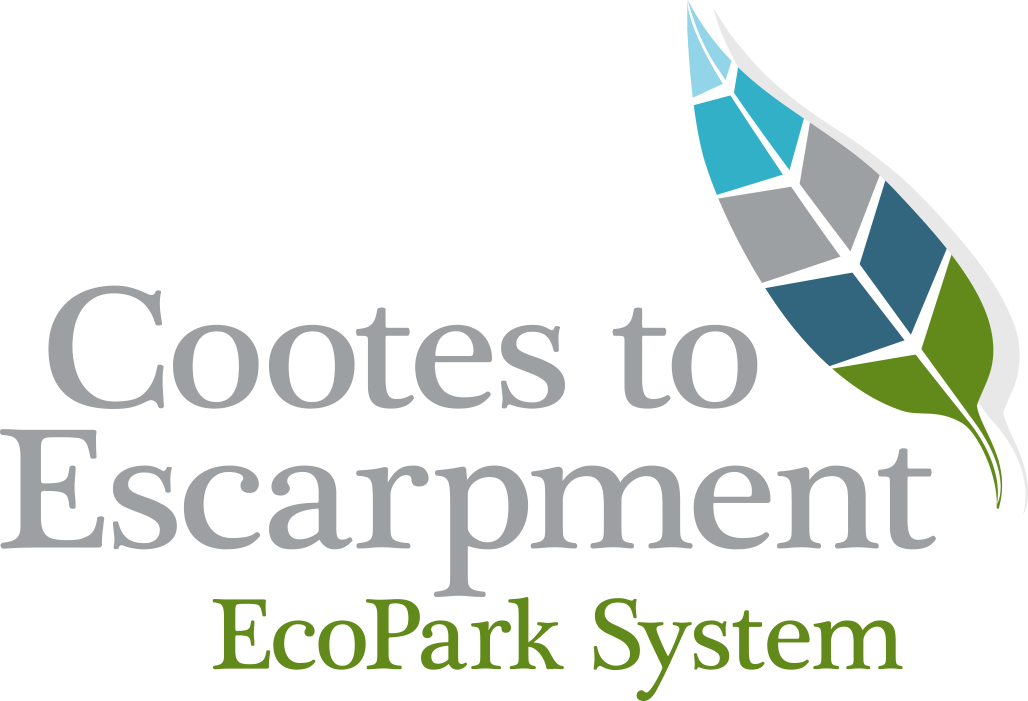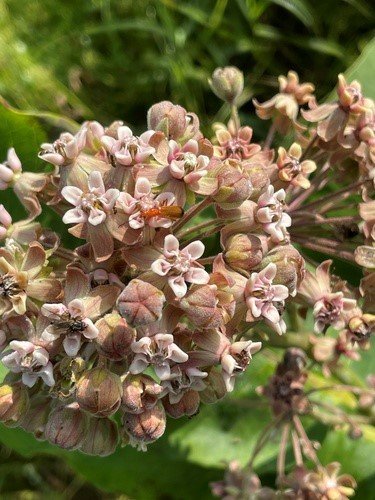Removing Invasive Species Strengthens Ecological Corridors in the Cootes to Escarpment EcoPark System and Beyond
Bruce Trail Conservancy
By Mara McHaffie, Land Stewardship Coordinator & Ecologist
31 January, 2024
At the heart of the Bruce Trail Conservancy’s (BTC) mission is the goal of preserving forever a healthy ecological corridor along the Niagara Escarpment – a ‘ribbon of wilderness’ in which wildlife can flourish and people can responsibly experience nature. Healthy corridors connect different natural areas, ensuring that wildlife can move around to find food, habitat, mates and everything else they need to thrive.
As one of Ontario’s largest land trusts, the BTC cares for over 15,000 acres of Niagara Escarpment land. In the Hamilton-Burlington area, the Niagara Escarpment corridor intersects with another important network of corridors: the Cootes to Escarpment Ecopark System. Here, a variety of natural lands stretching from Cootes Paradise to the Niagara Escarpment provide vital habitat for a wide variety of species, including many species at risk such as the Jefferson Salamander and Red-headed Woodpecker. The conservation work the BTC does in this area strengthens both the Cootes to Escarpment Ecopark System and the Niagara Escarpment corridor through which the Bruce Trail travels.
This year, the Cootes to Escarpment EcoPark System Ecological Corridor Pilot Program allowed the BTC to improve the health of these corridors in the Waterdown area through the management of invasive plant species.
At first, the connection between invasive species and the health of ecological corridors may not be obvious. However, chains are only as strong as their weakest link, and an abundance of invasive species can create weak links in our corridors. Many invasive plants outcompete native plants, leading to fewer and less diverse native species on the landscape. This, in turn, means less food and habitat for wildlife that may be using the corridor to travel. Many animals, such as birds and pollinators, have adapted to eating particular species of native plants, so when invasive species replace these native plants, they’re left without their preferred food sources.
Picture it this way: if you were on a long road trip and every rest stop only had one restaurant, and that restaurant happened to only serve food you were allergic to, you’d be pretty hungry. Anyone who’s ever taken a long trip with family knows that the ideal situation is a variety of food options, with something to fit each family member’s needs. This is what we are aiming for when managing ecological corridors.
With additional funding received this year, the BTC was able to collaborate with Conservation Halton to hire professionals to tackle invasive Dog Strangling Vine, Common Buckthorn, Multiflora Rose and other invasive shrubs in natural areas around Waterdown. This builds on work that volunteers, staff and our neighbours have done in previous years to keep these invasive plants in check. Importantly, the contractors were able to focus on the larger shrubs that are difficult to remove by hand, allowing them to eliminate major sources of invasive plant seeds that could spread further. Fewer invasive species means more space for a variety of native plants like Dogwood, which produces berries for birds, and Milkweed, which is essential for monarchs and other pollinators.
In future years, the BTC will complete follow-up invasive species removal in these areas and may also supplement the biodiversity of this area by planting native trees and shrubs. Volunteers continue to be vital in our efforts to steward the Niagara Escarpment corridor. If you’d like to volunteer with the BTC, visit brucetrail.org/apply-online-to-volunteer.





